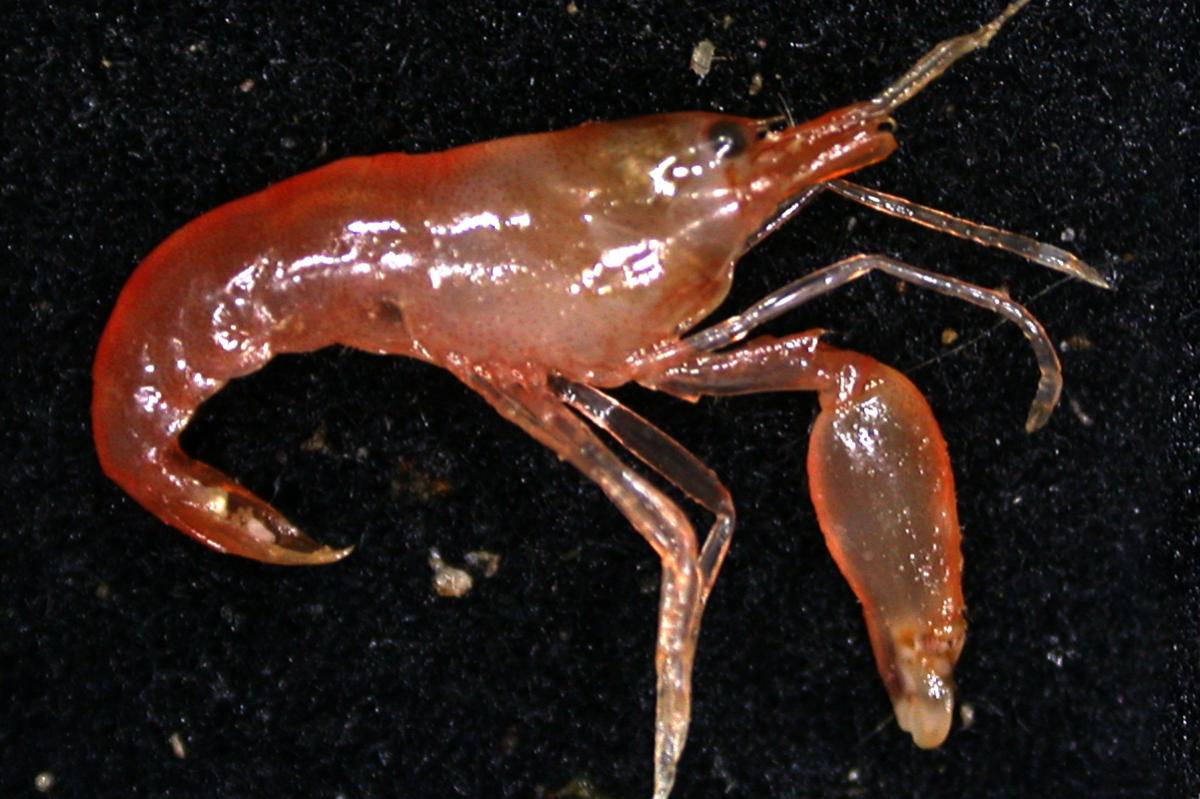D: Yaël, let’s discuss a creature small—and mighty. Have you heard of the pistol shrimp?
Y: Now there’s a ferocious animal, known for its claws: one is a normal pincer. The other is an enormous snapper—that’s the pistol. Because when this snapper snaps, bullets made of bubbles shoot towards prey. But now that I think about it, I’m not sure where those bubbles come from.
D: Let’s look at the science of the snapper. Half the claw is immobile, and it has a socket. The other part of the claw is called the dactyl, and it’s like a plunger that desperately wants to punch into that socket. The dactyl is the center of great tension, as muscles pull it backward and forward at the same time. Suddenly, the muscles pulling backwards release their grip. The dactyl shoots into the socket, which is filled with water. The water speeds out of a tiny groove in the socket, moving at one hundred and five feet per second!
Y: Oh, I see! When the shrimp snaps, it sets off a chain reaction. If water moves at a high velocity, the water pressure drops really low. Low pressure means that tiny bubbles already in water suddenly swell. These bubbles quickly collapse, and when they collapse, they generate a violent shockwave. It’s a process called cavitation.
D: And sometimes, for a brief moment, the bubble collapse creates temperatures of eight thousand degrees Fahrenheit—almost as hot as the surface of the sun! So the bubble bullets don’t cause damage; instead, the pistol shrimp uses a strong, hot shockwave to attack its prey.
Y: That is definitely a small and mighty attack.










